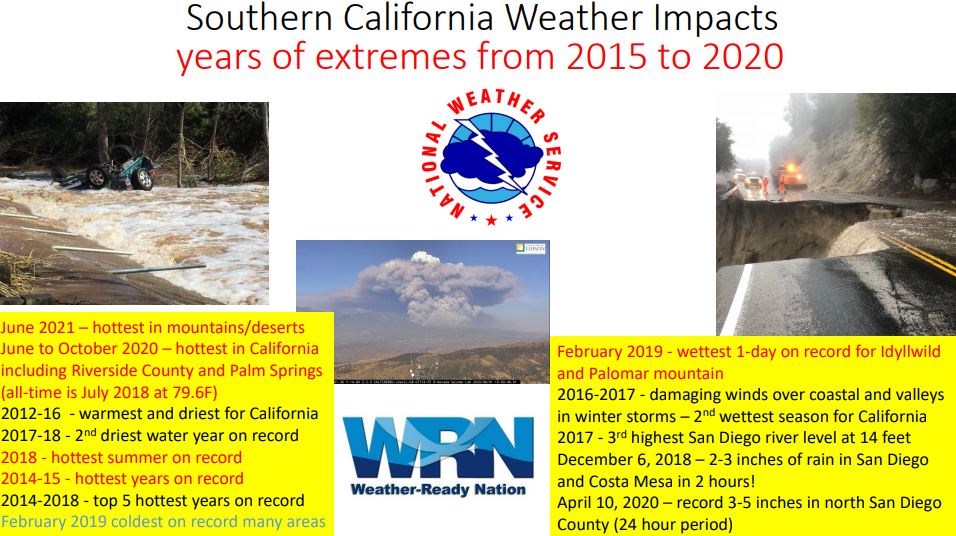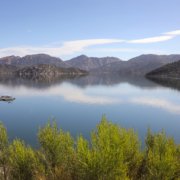An update on San Diego’s water supply during the current drought, and how climate change affects regional weather, was the main focus of a recent event sponsored by several organizations.
The Citizens Water Academy, Leaders 20/20 and San Diego Green Drinks hosted a lunch and learn session August 17 that also provided details on how weather and climate impacts water supplies, and how prepared the San Diego region is for drought impacts.
San Diego County Water Authority General Manager Sandra L. Kerl and National Oceanic and Atmospheric Administration Warning Coordination Meteorologist Alex Tardy spoke to nearly 90 participants via Zoom.
Climate change impacts and drought
Tardy kicked off the event with an overview of how climate change and drought impact regional weather conditions, and what this means for the region’s water supplies.
“Just here in Southern California, we have extreme heat, extreme precipitation and extreme drought,” said Tardy. “In talking about climate and climate extremes, we are not just talking about the obvious ones like temperature, we are also talking about other impacts like more intense storms, more frequent return of droughts and less normalcy.”
His presentation included highlights of how the past several years have included multiple weather extremes, ranging from wettest single days on record to the hottest and driest years. These included precipitation extremes of varying types and impacts, many of which were fueled by El Niño and La Niña weather patterns. Lack of precipitation and increased evaporation have led to record low water supplies in many reservoirs.
Regional drought preparedness
Kerl spoke about drought concerns throughout the Southwest, which include reduced local water supplies, reduced state supplies and Colorado River supply concerns. Governor Gavin Newsom has asked for voluntary 15% reductions in water use and commonsense conservation measures, which are habits already hard-wired in most San Diego County residents.
“The really good news here in our community is that we are prepared for multiple-year droughts – we have sufficient supplies for 2021, and that’s what water bills go to pay for: safe and reliable supplies,” said Kerl. “It’s also important to note that residents and businesses are hard-wired to conserve – the practices are ingrained in the community. Today we use 50% less per capita per day than we did 30 years ago.”
Kerl also highlighted that our region’s diverse water supplies include drought-resistant sources such as desalinated water, and that the San Diego region is prepared and has enough supplies for multiple dry years.

Throughout recent years, Southern California has experienced different types of weather extremes that have impacts on water supplies. Photo: Alex Tardy, NOAA/NWS.
Citizens Water Academy
The Citizens Water Academy provides an opportunity for emerging leaders and professionals in the San Diego region to learn about critical projects and programs related to water. Through the academy, the Water Authority seeks to expand and sustain a diverse network of influencers who are willing to serve as ambassadors on water issues and expand knowledge about the region’s water industry. To learn more, go to sdcwa.org/in-the-community/citizens-water-academy.
Leaders 20/20 is a young professionals network that aims to drive civic engagement to ensure a high quality of life in the San Diego region. Leaders 20/20 provides education on important issues affecting the environment and economy and helps professionals build connections to industry leaders: sandiego.edu/soles/hub-nonprofit/initiatives/leaders-2020.php.
San Diego Green Drinks is a social networking group of professionals in the environmental field who attend events to meet industry professionals, find employment or employees, develop new ideas, discuss issues and solve problems.
Watch a recording of the event, starting with Alex Tardy: https://bit.ly/385EGCP




